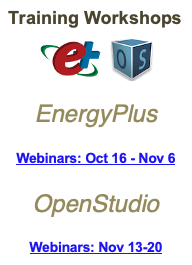How to model a working (VAV) HVAC system in energyplus
Greetings,
I am aware of the energyplus example files, the input/output reference, and engineering reference, and i have spent a while with all of the above.
I'm still not able to figure out what is required to model an HVAC system in energyplus, or how to properly model VAV controls so that the volume of airflow changes to meet the load in each zone. There are terminal HVAC objects, fans, airloop objects, supply loops, demand loops, branches, branchlists, controllers, nodes, schedules, and plenty more. How do they all fit together?
Can someone explain in a concise response, what energyplus objects are required for a VAV system, and what the role of each object is? I've read the documentation on most all of the objects in the VAV system example files, but there are just too many, and I can't keep it straight. Perhaps a comprehensive, brief summary exists somewhere that I haven't looked?






Ryan, I'm not trying to be condescending, just an honest question: how familiar are you with VAVs in the real world in the first place? Second, have you put the .svg files created with the examples to use? (I recommend using Inkscape, open source SVG reader, instead of classic IE on Windows).
Hi Julien, I take no offense to your question - and no, I'm not a VAV system expert in the real world. However, even if I had expert knowledge of real-world HVAC systems, the modeling and simulation methods of energyplus are tough to sort out from the documentation, in my opinion, and I figured that i wouldn't be the only one with this question - so i asked. In Jason't answer below, there are 31 different objects required for a VAV system (and he didn't include individual
Nodeobjects). Figuring out that list is one challenge; learning how they all interact and connect is another.Individual node objects? None required, except perhaps a nodelist or two for convenience. Yes, there are many pieces, but that's part of the price of giving flexibility rather than standard fixed system configurations. For those, that's why HVACTemplate and GUIs were developed to help eliminate the complexity of the connections.
TRNSYS if you want to simulate "how an engineer thinks," and E+ if you want a 1990's "object-oriented" approach where you can't model/simulate that object in isolation. Modelica for the 21st century.